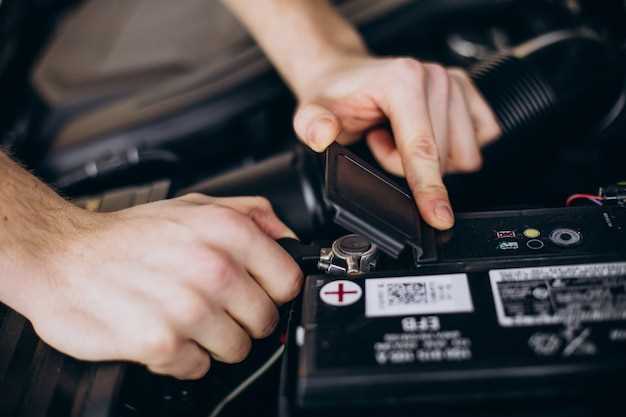
When it comes to maintaining a vehicle, one of the most critical areas to pay attention to is the electrical system. A car’s electrical system is responsible for powering everything from headlights to ignition systems, and any malfunction can lead to significant disruptions in vehicle performance. Understanding the common car electrical problems can help drivers diagnose issues early and seek appropriate solutions.
Among the frequent electrical issues encountered are battery failures, alternator malfunctions, and faulty wiring. A dead battery might be the most recognized problem, often caused by leaving lights on or wear over time. Similarly, the alternator, which charges the battery while the engine runs, can fail, leading to power shortages. Recognizing these symptoms early can save time and reduce repair costs.
This article will delve into the most common electrical problems faced by car owners, outlining clear symptoms and effective solutions. From testing your battery to replacing worn-out fuses, being informed about these issues and their remedies can enhance your driving experience and ensure your vehicle’s reliability on the road.
Diagnosing Battery Issues: Tools and Techniques
When troubleshooting car battery problems, having the right tools and techniques at your disposal is essential. A well-functioning battery is crucial for the overall performance of your vehicle, and identifying issues early can save you from unexpected breakdowns.
Start by using a multimeter, an invaluable tool for diagnosing battery issues. Set the multimeter to measure voltage and connect the probes to the battery terminals. A healthy battery should read around 12.6 volts when fully charged. If the voltage is below 12.4 volts, the battery may be undercharged; readings below 12 volts indicate that the battery is likely defective or dead.
Next, consider performing a load test. A battery load tester simulates the electrical load on the battery to assess its ability to hold a charge. Connect the tester to the battery and apply a load equivalent to half of the battery’s cold cranking amps (CCA) for about 10-15 seconds. If the voltage drops significantly below 9.6 volts during the test, it indicates a failing battery.
Visual inspection is another key technique in troubleshooting. Check the battery terminals for corrosion or loose connections, which can hinder the flow of electricity. Clean any corrosion with a mixture of baking soda and water, and ensure that the terminals are securely fastened.
Additionally, the condition of the battery cables should be examined. Frayed or worn cables can lead to poor connection and battery drain. Replace any damaged cables to ensure optimal performance.
Finally, be aware of your car’s electrical system. Irregularities such as dimming lights or slow cranking can signal battery issues. Regularly monitor these symptoms and maintain your battery to prolong its lifespan and ensure reliability on the road.
Troubleshooting Alternator Failures: Signs to Watch For

When troubleshooting car electrical issues, one of the key components to inspect is the alternator. This device is responsible for charging the battery and powering the electrical system while the engine is running. Recognizing the signs of alternator failure can prevent further damage to your vehicle.
One of the most common symptoms of alternator problems is a dim or flickering dashboard light. If you observe your battery warning light glowing or flickering, it often indicates that the alternator is not providing adequate power.
Another crucial sign is a dead battery. If you find that your car struggles to start or the battery frequently needs a jump, the alternator might not be effectively charging it. Regularly replacing a seemingly good battery could be a waste of resources if the root cause is the alternator.
Noisy components can also signal an alternator issue. Listen for grinding, whining, or unusual noises coming from the alternator area. These sounds may indicate worn bearings or internal damage, necessitating further investigation.
Inconsistent electrical performance within the vehicle can be a telling indicator as well. If you experience issues with headlights dimming when other electrical components activate, it’s time to examine the alternator’s functionality.
Lastly, excessive heat emanating from the alternator while the vehicle is in operation can hint at electrical failure. An overheated alternator can lead to a complete breakdown, making it crucial to address any overheating signs immediately.
In summary, when troubleshooting alternator failures, keep an eye out for dim dashboard lights, a dead battery, unusual noises, inconsistent electrical performance, and excess heat. Addressing these signs early can help maintain your car’s electrical health.
Addressing Electrical Short Circuits: Step-by-Step Guide

Electrical short circuits can cause significant issues in a vehicle, leading to malfunctioning systems or even fire hazards. This guide provides a step-by-step approach to troubleshooting and resolving electrical short circuits effectively.
Step 1: Safety First
Before starting any troubleshooting, ensure your safety by disconnecting the vehicle battery. This prevents electrical shock and further damage to the electrical system.
Step 2: Identify the Symptoms
Common signs of a short circuit include blown fuses, overheating components, or erratic behavior of electrical systems. Carefully note when and how these issues occur to help narrow down the possible causes.
Step 3: Inspect the Wiring
Start by examining the wiring harness and connectors related to the malfunctioning components. Look for damaged insulation, exposed wires, or loose connections that may be causing the short circuit.
Step 4: Use a Multimeter
A multimeter is essential for troubleshooting. Set it to measure continuity and probe the wires involved. A short circuit will show a continuous path where it shouldn’t exist. Identify the location of the short for further action.
Step 5: Isolate Components
If the short circuit is still unclear, begin isolating components one by one. Disconnect devices or circuits to determine if the short persists. This process will help in pinpointing the faulty component or section of wiring.
Step 6: Repair or Replace
Once the source of the short circuit has been identified, proceed to repair damaged wires or replace malfunctioning components. Ensure that all connections are secure and insulated properly to prevent future issues.
Step 7: Test the System
Reconnect the battery and test the electrical system. Monitor for any signs of the short circuit reappearing. If everything functions correctly, you can be confident the issue has been resolved.
Step 8: Preventative Measures
To avoid future electrical short circuits, regularly inspect wiring and connections, and ensure that any modifications made to the vehicle’s electrical system are done correctly. Keeping a clean and organized electrical environment will also help mitigate risks.
